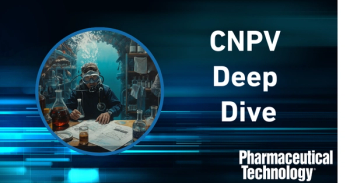
- Pharmaceutical Technology-11-02-2013
- Volume 37
- Issue 11
Defining and Presenting Overkill Cycle Validation
Sterilization validation must be based on a robust, quality-by-design philosophy; autoclave overkill cycles should be validated by correlating lethality data to support chosen critical process parameters, even when using overkill sterilization.
When sterilization validation comes up in an audit of a moist steam-sterilization autoclave, the quality assurance manager will be asked to explain how autoclave loads were validated. The conventional, easy answer is the term “overkill,” which is understood to mean that all items were steamed beyond all hope of anything surviving a grossly exaggerated load cycle--and that would be the end of it. This “overkill cycle” entails increasing the temperature or lengthening the time of the sterilization cycle with little understanding of what is occurring within the load items. All bioindicators (BIs) are inactivated at some undetermined but early point in the validation cycle, and temperature profiles are presented separately. In this approach to overkill sterilization cycle validation, no attempt is made at correlation of the biologic and physical data. Temperatures recorded by thermocouples are used to calculate the accumulated lethality at various load points. Bioindicators are placed beside each of these thermocouples to comply with well-established sterilization methods. In this scenario, BIs are considered as mere binary factors, either alive or dead. The data would be presented as just that: all BIs were inactivated.
A key component when presenting any autoclave validation package, however, is to be able to clearly defend how the requirement to correlate biologic and physical lethality data from the validation reports is satisfied (1). Fulfilling this requirement can provide sound justification for autoclave critical process parameters (CPPs) and how they were validated, no matter what type of production cycle is run.
The data demonstrated by the inactivation of the BIs have a numeric value, because the D-value (i.e., the decimal reduction time or time required to kill 90% of the BIs) and population are known through compendial testing. Because the F0 number (i.e., lethality level) represented by the physical data is derived by an equation of probable microbial death rates, actual kill must be demonstrated as well. Although less precise by nature than data generated by calibrated thermocouples, the BI data can be enumerated and are relevant when compared to the physical data to demonstrate a real versus theoretical kill. It is this one-two punch that makes the validation an assurance of the routine sterilization process.
Defining overkill
The key point to remember is that overkill is a process description of the programed autoclave cycle parameters and not a validation description. In the Parenteral Drug Association Technical Report 1, an overkill cycle is defined as: “a sterilization cycle that is demonstrated to deliver an Fphy and Fbio of 12 minutes to the items being sterilized” (2). Overkill is differentiated from process-specific autoclave cycles for which the incoming bioburden load is not known. An overkill cycle addresses the worst possible routine manufacturing conditions and will assure that autoclaved items will meet the definition of sterile at the end of the routine autoclave cycle. It is for this reason that the United States Pharmacopeia (USP) General Chapter<1035> states that, with an overkill cycle, the need for incoming bioburden enumeration may be reduced (3). Referring to the manufacturing process, then, an overkill sterilization program for an autoclave describes the cycle, not the word validation.
Validation requirements
Validation for autoclaves is just like any other validation in that the executed test scripts must demonstrate a reliable, repeatable process. Because the process in question is one of microbial kill, which is based on probability, sterilization validation has the requirement of additional proof by means of testing using compendial BIs.
An overkill cycle addresses the worst possible routine manufacturing conditions, which should be challenged by the validation load conditions (2). The validation represents a known, worst-case demonstration of a successful cycle; hence the most resistant organisms (e.g., Geobacillus stearothermophilus) with a high population count are placed in the most difficult locations for steam penetration within a given load.
An overkill production cycle may be an appropriate choice to satisfy the numerous and sometimes conflicting regulatory requirements for delivered leathality to assure sterilization by claiming a CPP for F0 of greater than a certain value, but the choice does not absolve a manufacturer from applying appropriate validation principles in demonstrating CPPs are met. If one of these methods of demonstration is biological data, these data should be relevant to the test being conducted.
Assessing bioindicators
BIs, if used as per USP <1035>, contain a known population of organisms. The range of possible BI D-values is 1.5-3.0 minutes and the population per indicator must be 105-106. Whether BIs are made in-house or purchased, these attributes of the BIs are documented. It is this known population that must be correlated to the actual F0 measured at the adjacent thermocouple to give the test results meaning and justify the cycle conditions of the autoclave for the worst-case loads under test.
For example, inactivating a BI with a D value of 1.5 and a population of 106 should take an F0 of 18 min. When the adjacent thermocouple accumulates 40 F0s, a margin of error greater than 100% has been built into the biological portion of the test. This is an example of a bad test, not of “overkill sterilization validation.” If, however, the BI has a D value of 36, the maximum allowable for a compendial indicator, then an Fphy of 40 would seem appropriate.
Justifying load parameters
When claiming overkill sterilization, one must be careful to still have a good scientific rationale for the choice of cycle parameters. Just choosing the time and temperature on a cycle without detailed assessment does nothing to demonstrate control or knowledge of the critical operating parameters of the autoclave cycle or how those are affecting your particular load conditions. Theoretical values cannot be assured throughout a load before mapping with thermocouples is done to assure air removal, and equilibration times support these assumptions.
It is crucial to determine appropriate cycle parameters. This author has repeatedly found autoclave cycles programed by the autoclave manufacturer and accepted by the plant owner without running development studies prior to operational and performance qualification. The program parameters were assumed to provide a predetermined sterility assurance level within all load items without any testing prior to the validation runs of an overkill cycle. It is necessary to compare theoretical F0s with the actual F0s delivered in an actual cycle. This real development testing will give a good idea of performance and capability of the autoclave and allow for realistic program-parameter settings.
It may be appropriate to add some time or temperature as a safety factor to account for all of the variables inherent to autoclaving items needed in a manufacturing process. Unknown incoming bioburden load is a reasonable driver to choose an overkill sterilization cycle. However, gross overage indicates a lack of control of the process and a lack of understanding of the appropriate lethality being delivered to load items. Delivered lethality should be well understood from development runs and applied judiciously, even in overkill cycles, in order for validation to be a credible assurance of process functionality.
Fractional cycles as a method of validating overkill cycles
Once actual F0s throughout loads have been determined in development studies, program parameters may be defined for the autoclave cycles. At this stage it may be appropriate to use fractional validation load programs, for which the validation cycle program delivers an F0 close to values needed to inactivate the BIs. The successful completion of this fractional cycle then gives a baseline to which a rational overage may be added for routine manufacturing cycles and justifies the term overkill (4).
By defining a fractional (i.e., partial) cycle time and temperature for validation loads based on an understanding of the autoclave capabilities in conjunction with particular load limitations, an excellent rationale can be made, and manufacturing cycles can be programed as overkill cycles. The overkill compensates for deviations in time or temperature caused by calibration faults in controlling thermocouples, chamber leaks, variability in packaging and assembling components, or other production events.
Conclusion
A cavalier approach to sterilization validation is no longer enough to satisfy most regulatory inspectors, who have grown accustomed to control strategies based on risk assessment and scientific rational for the mitigation of the identified risks. A more robust, quality-by-design philosophy based in sound science and process understanding is more appropriate and defendable.
Any autoclave validation, for either overkill or product-specific load cycles, must demonstrate the delivered lethality to the most difficult locations using biological and physical data. More than being just a “dead or alive” reading, the BI does enumerate delivered lethality when assessed appropriately. By knowing the D value of the BIs used and setting the fractional validation cycle to accommodate this value, inactivation can be achieved in the BIs and correlated to the thermocouple readouts. This validated cycle can then be appropriately increased to account for minor process variations to support a robust, validated process. This validation method, firmly based in the accepted tenets of sterilization science and a rational scientific approach, will provide a sound basis for an autoclave sterilization program.
References
1. FDA, Guidance for Industry: Sterile Drug Products Produced by Aseptic Processing--Current Good Manufacturing Practice, Section IX C 1 (Rockville, MD, Sept. 2004).
2. PDA, Technical Report No. 1: Validation of Moist Heat Sterilization Processes Cycle Design, Development, Qualification and Ongoing Control (Bethesda, MD, Aug. 2007).
3. USP, General Chapter <1035> “ Biological Indicators Used for Sterilization” (US Pharmacopeial Convention, Rockville, MD, 2013).
4. USP, General Chapter <1211> “Sterilization and Sterility Assurance of Compendial Articles” (US Pharmacopeial Convention, Rockville, MD, 2013).
About the Author
John Anderson is a quality assurance and validation professional with years of inspection experience.
Articles in this issue
about 12 years ago
Report from Brazil November 2013about 12 years ago
Applying Catalysis to Optimize API Synthesisabout 12 years ago
Predicting Long-Term Storage Stability of Therapeutic Proteinsabout 12 years ago
Control of Elemental Impuritiesabout 12 years ago
Automation System Improves Operational Insightabout 12 years ago
Disposable Applications in Demand by Biopharmaabout 12 years ago
Solvent-Free Coating of Traditional and User-Friendly Dosage Formsabout 12 years ago
Congress Revises Rules for Drug Compounding and Supply-Chain Securityabout 12 years ago
Can Pharma Defy Gravity at the Patent Cliff?about 12 years ago
Preparing for Patent ExpiryNewsletter
Get the essential updates shaping the future of pharma manufacturing and compliance—subscribe today to Pharmaceutical Technology and never miss a breakthrough.





